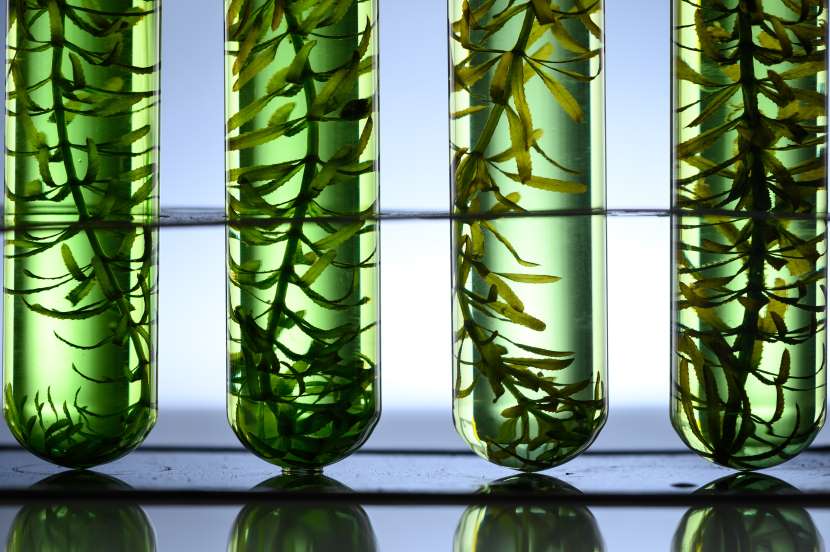
Marine algae have been used since ancient times in agriculture to improve soil fertility and yield (Khan et al., 2009). There is evidence of the use of marine algae in ancient Japan, based on the food goddess “Ukimochi”, of their application in agricultural practice in the Roman Empire and in many other ancient civilisations in medicine, pharmacology and textiles (Battacharyya et al., 2015; Khan et al., 2009). It has been estimated that there are over 8,000 species, which are classified into various groups. They are generally classified based on their colouration into three main groups:
- Brown (Phaeophyta)
- Red (Rhodophyta)
- Green (Chlorophyta)
Brown algae are the second most abundant group, consisting of about 2,000 species, with Ascophyllum nodosum L. being the most studied and common in agricultural practice (Kaluzewicz et. al., 2017).
The composition depends largely on the extraction method. This is because using different extraction techniques, different compounds are isolated, with different mechanism of action (Michalak et. al., 2016).
In addition to the source and the choice of the extraction procedure, important parameters for determining the mixture of components are the collection season, the temperature and the type of algae.
According to du Jarbin, (2015), the most common commercial extracts are mainly derived from brown algae:
- Ascophyllum nodosum.
- Durvillaea potatorum.
- Laminarias spp.
- Ecklonia maxima.
- Sargassum spp.
In any case, the aim of these formulations is not to provide nutrition to plants, but rather to enhance their metabolism, reduce abiotic stress, etc. It is noted that the extracts are active as biostimulants at quite low concentrations (diluted at a ratio of 1:1,000), suggesting that the observed effects on plant physiology are different from those associated with direct nutrition.
By enhancing nutrient utilisation, microbial activity and contributing to soil improvement, seaweed extracts (SWE) promote seed germination and germination. They, also, enhance plant growth, flowering, fruiting, yields and quality. At the same time, they help to ensure resistance to all types of abiotic stress. The beneficial properties of these biostimulants, also, arise under the permanent conditions of intense abiotic stress in which they develop. In order to adapt appropriately to these conditions, they have developed compounds which aid their growth, such as plant growth hormones, etc.
Seaweed extracts contain a variety of plant hormones including, cytokinins (CKs), auxins, amphiphilic acid (ABA), gibberellic acid (GAs) and salicylic acid.
Also, Milton (1962), demonstrated that seaweed extracts exhibit an increased ability to retain enriched mixtures of trace elements (Cu, Co, Zn, Mn, Fe, Ni, Mo and B) in soluble form for agricultural applications. At the same time, they are referred to as “chelating agents”, favouring the utilisation of inorganic nutrients and improving soil conditions.
In recent years, using molecular biology techniques, such as metabolomics and genomics, it has been estimated that the observed effects of seaweed extracts on plant organisms result from the action of certain organic molecules and polymers, which regulate the expression of specific growth induction and abiotic stress-resistance genes. Plants to which seaweed extracts were applied exhibited:
- Increased photosynthetic activity (expression of genes related to the Rubisco process).
- Increased nitrogen (N) and sulphur (S) content.
- Increased antioxidant capacity (reduction of ROs).
- Enhanced starch synthesis.


